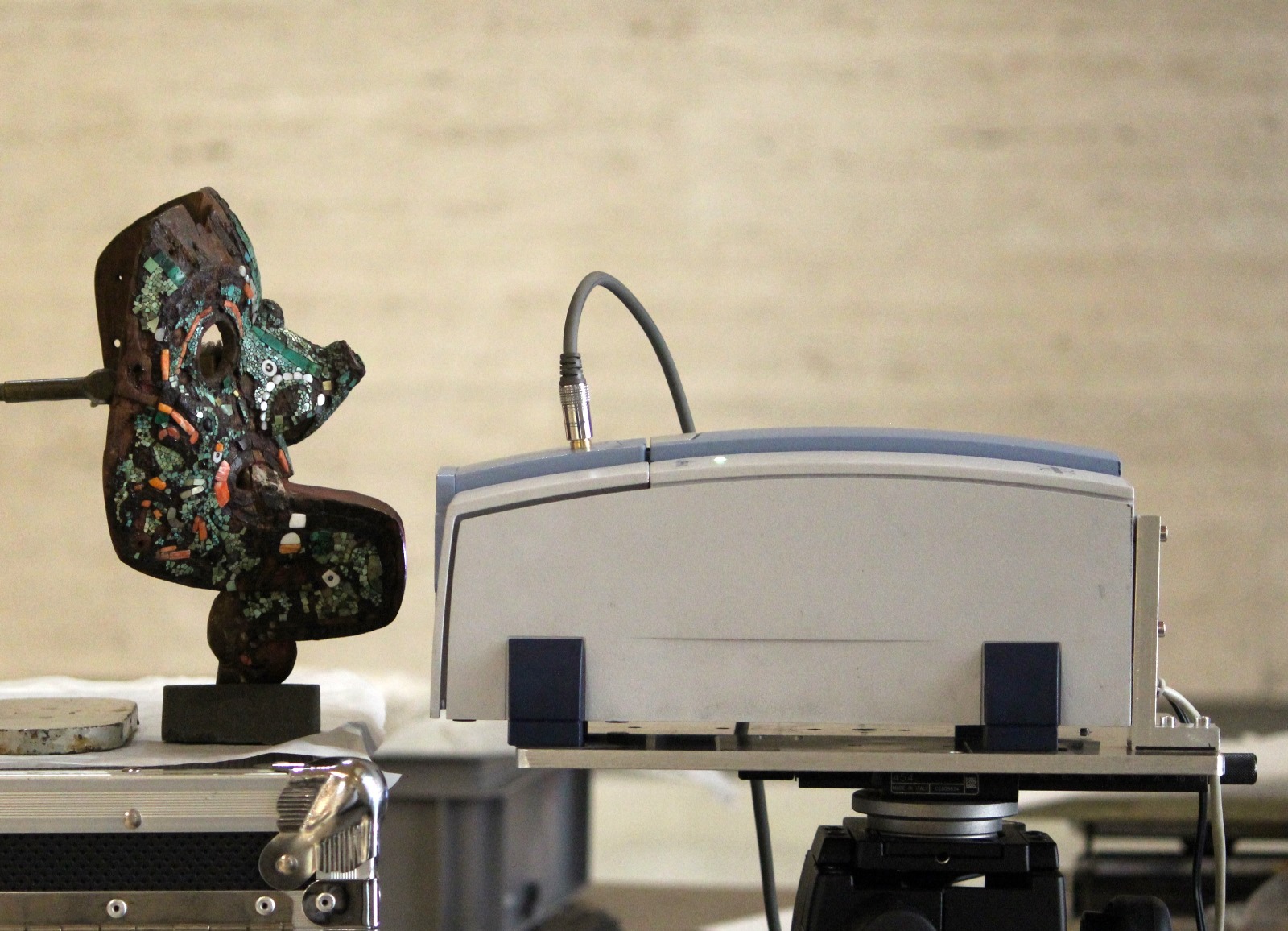Service: External reflection IR spectroscopy
Platforms
Molab
Techniques
Fourier transform infrared spectroscopy

Organization

Service contact persons
Reference
External reflection IR spectroscopy is widely used in the field of heritage science for the characterization and identification of organic and inorganic materials.
It is a vibrational molecular spectroscopic technique, it provides information concerning the functional groups constituting the molecules ultimately aiding a molecular identification of unlimited materials under exam. The mid-IR range is particularly adapt for the recognition of inorganic materials (with some limitations from metal oxides) as well as synthetic and natural organic materials. This technique can provide information concerning the condition state, any surface contaminations, alterations and products/processes of degrade. The shortwave infrared range (SWIR, but often referred as NIR), is collected simultaneously, providing signals that are characteristic of infrared combination and overtone bands which have very low absorption coefficients. This region provides distinctive features regarding both the chemical composition of organic and inorganic compounds. As the NIR radiation is particularly penetrating, it can for example typically pass through paint layers and reach the ground layer of paintings providing information of pigments and binders alike. As a amatter of fact, the wide spectral range simultaneously explored enables to probe both surface (mid-IR) and sub-surface (NIR) compositions.
Not suitable for artworks conserved in high humidity environment (>70RH%)
Fields of application
Archaeometry
Chemistry
Heritage science (cultural heritage discipline)
Materials science
Science-related disciplines
Materials
Oil (organic material)
Inorganic materials
Synthetic inorganic pigment
Synthetic resin
Protein
Gum (material)
Synthetic resin paint
Polymers
Inorganic pigment
Organic material
Inorganic materials
organic materials
Salt (inorganic material)
Soluble salt
Inorganic materials
organic materials
Tools
Other information
-
Input: Imaging/photografic (Vis, UV, NIR) documentation available from the users (jpg, tiff)
-
Output: Original Ascii files; complete MOVIDA file with measuring points, metadata (experimental conditions, comments relative to the point), data processing and interpretation; image of the sampling area

